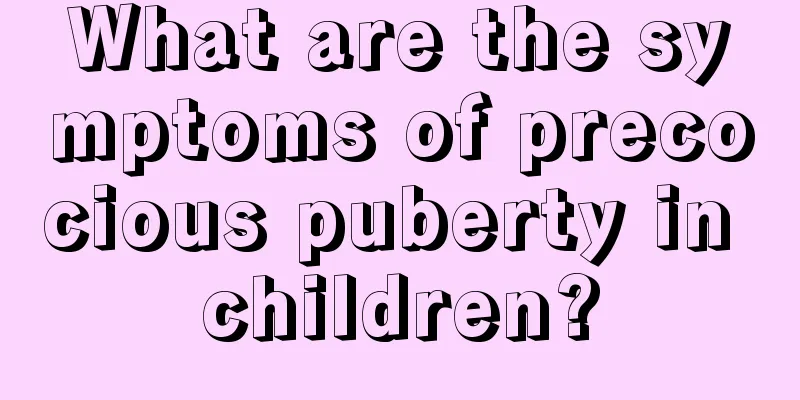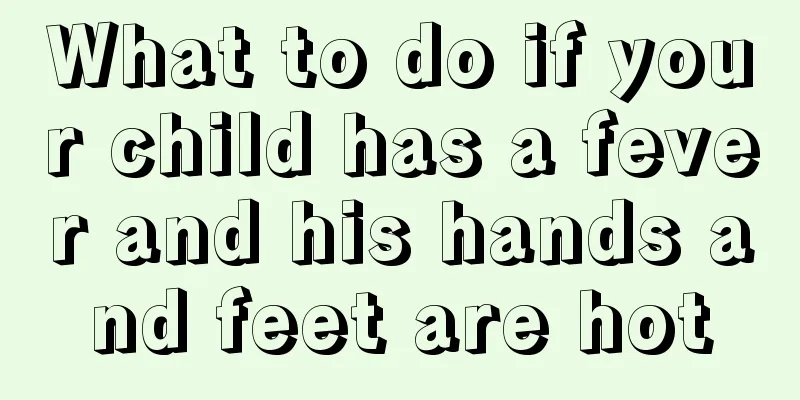What causes blisters on children’s lips?

|
You should pay more attention to children when they are still eating, especially newborns. There are many unscientific and backward ways that the elderly at home use to take care of children, but there are some folk Chinese medicine methods that are correct. The blisters on a child's mouth can be big or small. It is recommended to consult a doctor before using folk Chinese medicine methods. It may not be a problem for adults, but the gastrointestinal system of a child is not fully developed and cannot withstand such stimulation. 1. 2-5 days after birth, a newborn baby often develops a thin white skin on his lips. Some parents often peel it off or rub it hard with their hands. This is wrong and often leads to bleeding or infection. When a newborn baby has thin white skin on his lips, you can apply paraffin oil or peanut oil on his lips. Apply it once after each feeding and wait for it to fall off naturally. You can also soak sterilized gauze in warm water and cover your lips with it. After 1 hour, remove the gauze and gently wipe them with a small sterilized towel. Do not remove it forcefully to avoid bleeding or infection, which may cause unnecessary pain to the newborn. 2. Does your baby have thrush? Thrush is an inflammation of the oral mucosa caused by fungi such as Candida albicans, and it often occurs in newborns and infants. Candida albicans can parasitize on the skin, intestines, and vagina of healthy people. Because the things that children put into their mouths are not clean: the breast milk bottles are not sterilized properly, the nurse's nipples are not clean, and the hands of the people who take care of the children are not clean, which causes the items used by the children to be contaminated. For newborns or infants who lack resistance, thrush is likely to occur. Some newborns are infected during delivery through the birth canal. The main symptoms of thrush are: white curd-like substances appear on the oral mucosa, commonly on the buccal mucosa, inner side of the upper and lower lips, tongue, gums, palate, etc., and sometimes spread to the pharynx. This white film is not easy to wipe off, and the local mucosa will become red after peeling off. Generally, children do not feel pain, do not drool, and their feeding is not affected. However, severe lesions can cause choking, difficulty swallowing, and difficulty breathing. 3. The lips are white and swollen, like blisters, but I don’t know if the baby has a fever. If there is a fever, it may be a viral infection and herpetic pharyngitis. It is better to take the baby to the hospital for a check-up! Herpetic stomatitis develops suddenly, manifested by fever, body temperature is usually around 38 degrees, headache, irritability, increased drooling, loss of appetite due to oral pain, swollen submandibular lymph nodes, and tenderness. Generally, after 2 to 3 days, the body temperature gradually decreases, but the oral symptoms begin to worsen. The gums of the entire mouth become red and swollen, and are dark purple-red. They will bleed if touched lightly. The oral mucosa is congested and looks dark red. There are many needle-tip-sized blisters on it, with a diameter of 1 to 2 mm, distributed in clusters, with thin and transparent walls. The blisters quickly rupture and fuse to form ulcers or erosions of varying sizes and irregular edges. The surface is often covered with a layer of grayish-white film that cannot be wiped off, which is called a pseudomembrane in medicine. Because the ulcer surface is large and appears in multiple locations at the same time, the pain is often very severe and saliva secretion increases significantly. If there is a secondary infection, the pseudomembrane on the surface of the ulcer will thicken, become dirty in color, and cause bad breath, causing great pain to the child. Sometimes the lesions also spread to the skin around the lips. Red macules may appear at the corners of the mouth and the skin of the upper and lower lips. Small blisters gather in clusters on the macules, dry and form scabs after bursting. Once the scabs fall off, temporary light brown pigmentation may remain. The course of herpetic stomatitis is generally 7 to 14 days. If there is secondary infection, the course of the disease may be extended to 2 to 3 weeks. It's just a simple case of getting angry. Generally, ensure that the child gets enough sleep. It's best to take a nap at noon. Eat more vegetables and fruits, supplement vitamins and drink more water to maintain a balanced nutrition in the body and enhance immunity. At the same time, keep your mouth clean, rinse your mouth before going to bed, and do not eat after brushing your teeth, especially sweets. You should eat less hot foods. |
<<: Causes of blisters on baby's tongue
>>: What are the symptoms of capillary hemangioma in children?
Recommend
What to do if your 3-year-old baby has a rebellious temper
Parents should use different educational methods ...
What is the cause of the child's sudden ear pain?
The ear is a very important organ in our human bo...
What is the effective treatment for sinusitis in children?
When children suffer from sinusitis, we must firs...
Causes of retinal hemorrhage in premature infants
Every child is full of hope for the family. Often...
How to quickly reduce your baby's fever
Babies are very fragile, so parents will try thei...
Can children's astigmatism and myopia be cured?
If children have astigmatism and myopia, they can...
Why do children like to bite people?
Mothers really like to communicate about their ch...
Is myocardial damage serious after a newborn cold?
Newborns will develop many adverse symptoms after...
Is steaming suitable for children?
Try not to take children to sweat steam. Even if ...
What should I do if my child has autism? Autism solutions
Autism is a problem that everyone in society is c...
How to cut nails for newborn baby?
Newborn babies are in the stage of growth and dev...
What to give for a baby's full moon
There are two very important times for children, ...
What should I do if my baby sucks his fingers?
Almost every child has the habit of sucking his o...
Is yellowing of the whites of a newborn's eyes jaundice?
After going through the difficult ten months of p...
Traditional Chinese Medicine Treatment of Precocious Puberty
Precocious puberty is not a new term. In fact, ma...









